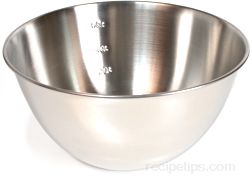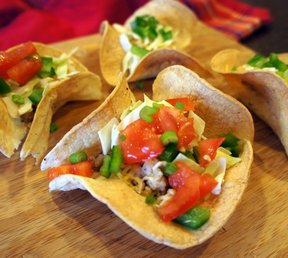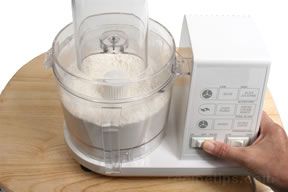The smallest sized bowls are commonly used for mixing small quantities or beating eggs. Larger bowls are most often used to prepare medium amounts of sauces or for mixing dried ingredients. The larger bowls are traditionally used to mix batters, beat large volumes of eggs, prepare whipping cream, or mix salads and dressings. Some bowls will have formed handles while others will be smooth around the surface without any type of attached or formed handle. When selecting bowls, locate sizes that will easily hold amounts sufficient for the type of recipes commonly prepared. Make sure the bowls purchased have markings on the side to indicate various levels of amounts, such as 2, 4 or 6 quart levels. The bottom of the bowl should be flat to keep the bowl from tipping or rocking when mixing ingredients. Many bowls will have a thicker or curled edge to keep the ingredients from dripping from the bowl edge as the ingredients are poured into baking pans or other bowls. Metal mixing bowls and some glass or ceramic bowls have the added value of being good conductors of hot or cold temperatures allowing ingredients to be heated and melted or chilled and maintained at temperatures that assist with the preparation of various foods.
Loading
Mixing Bowls
Round bowls of varying sizes that are used for combining food ingredients when preparing recipes. Mixing bowls are made of plastic, ceramic, glass, copper, and stainless steel that range in size from 4 inches in diameter to over 16" in diameter. Common bowl sizes available include 1½, 2, 2½, 4, 5, 6, 8, 10, and 12 quart bowls. There are however, a wide variety of sets with different sized bowls included as part of a 3 or 4 bowl set that can be stored easily nested within the next larger size.
There currently aren't any reviews or comments for this term. Be the first!
Advertisement
Advertisement














